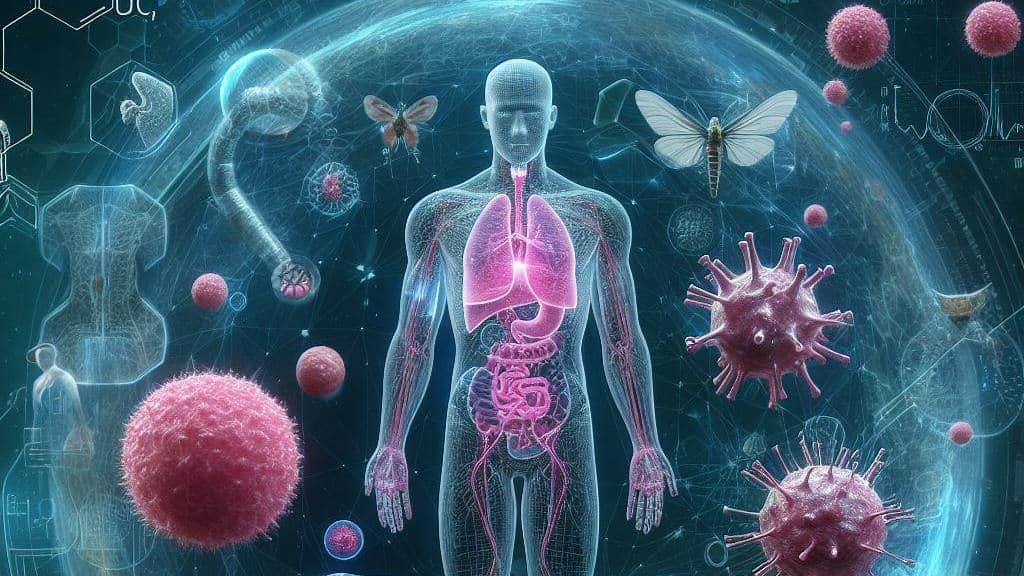Named ‘Ceograph’, this AI model achieves remarkable accuracy in forecasting outcomes for cancer patients from their tissue samples.
In Brief
The innovative AI model, Ceograph, has been designed to accurately predict the outcomes for individuals battling cancer based on their tissue samples.

Researchers from the UT Southwestern Medical Center (UTSW) have created a new AI model known as Ceograph, with capabilities to predict outcomes for patients with cancer based on their tissue samples. artificial intelligence This development opens up new possibilities for leveraging AI to project the probable progression of cancer and to customize treatment plans accordingly. The findings are documented in the journal Nature Communications and focus on analyzing the spatial arrangement of cells in tissue samples.
"The organization of cells is akin to a multifaceted jigsaw puzzle, where each cell acts as a distinct piece that intricately fits into the overall structure of the tissue or organ. This research highlights AI's impressive ability to interpret these complex spatial relationships among cells, unveiling subtle insights that human observation might miss while making predictions about patient outcomes,\" explained Guanghua Xiao, the lead researcher at the University of Texas Southwestern Medical Center. disease In the field of pathology, the routine practice of collecting tissue samples from patients has been fundamental for diagnosis. These samples, usually presented on slides for pathologists to examine, form a critical part of the diagnostic workflow.
However, Dr. Xiao points out the limitations of this traditional method. It's often labor-intensive, open to different interpretations by pathologists, and may overlook subtle details in pathology images that could contain critical information regarding a patient's condition.
To tackle these issues, Dr. Xiao and his team introduced the Ceograph AI model. Different from its predecessors, Ceograph aims not only to identify varying cell types or their proximity but also to emulate the complex analysis a pathologist conducts when examining tissue imagery.
Dr. Xiao noted that previous AI models have succeeded in tackling specific tasks but struggled to fully encapsulate the intricate nature of a pathologist’s work. This complexity entails recognizing the patterns within cell spatial organization and filtering out irrelevant distractions in images—elements that are vital for making precise assessments.
Ceograph's Advantage over Traditional Techniques AI model Dr. Xiao stated that Ceograph distinguishes itself by simulating how pathologists cognitively process tissue slides. It starts by identifying cells within the images and mapping their locations. Subsequently, the AI model goes beyond basic identification, exploring the complex intricacies of cell types, their morphology, and their spatial arrangements.
This new AI model generates a comprehensive map that provides insights into cell organization, distribution, and intercellular interactions, marking a significant advancement in AI's ability to replicate the nuanced skills associated with human pathology.
The research team applied this tool in three practical clinical scenarios using pathology slides. In one case, Ceograph successfully differentiated between two lung cancer subtypes—adenocarcinoma and squamous cell carcinoma.
The model was also adept at predicting the likelihood of potentially dangerous oral conditions (like precancerous lesions in the mouth) escalating into full-blown cancer. Furthermore, the team was able to identify which lung cancer patients would likely respond well to a specific category of medications known as epidermal growth factor receptor inhibitors.
In all tested scenarios, researchers concluded that the Ceograph model significantly outperformed traditional methods when it came to forecasting patient outcomes.
Crucially, the spatial organization features identified by Ceograph are interpretable and yield biological insights regarding how variations in cell interactions can lead to different functional outcomes, as emphasized by Xiao.
He also stressed the increasing significance of AI in pathology, highlighting its potential to improve the efficacy and precision of pathology assessments. This approach suggests an opportunity for optimizing targeted preventative measures and improving treatment options for individual patients.
Please keep in mind that the information presented on this page is not intended to serve as legal, tax, investment, financial, or any other kind of advice. It's essential to invest only what you can afford to lose and consult independent financial advisors if you have any uncertainties. For additional details, we recommend reviewing the terms, conditions, and support materials offered by the respective issuer or advertiser. MetaversePost is dedicated to providing accurate and impartial reporting; nevertheless, market conditions might change without prior notice.
Kumar is a seasoned Tech Journalist well-versed in the dynamic interplay between AI/ML, marketing technologies, and emerging sectors like cryptocurrency, blockchain, and NFTs. Having spent over three years in the industry, Kumar has built a solid reputation for crafting engaging narratives, conducting enlightening interviews, and offering in-depth analyses. His expertise lies in producing impactful content, such as articles, reports, and research papers for leading platforms in the industry. With a unique blend of technical acumen and storytelling ability, Kumar excels at making complex technological subjects accessible and engaging for a broad audience.
Blum Marks Its One-Year Anniversary by Receiving Awards for ‘Best GameFi App’ and ‘Best Trading App’ at Blockchain Forum 2025. AI in medical care Addressing DeFi Fragmentation: How Omniston Enhances Liquidity on TON.
Disclaimer
In line with the Trust Project guidelines Vanilla Unveils 10,000x Leverage Super Perpetuals on the BNB Chain.







